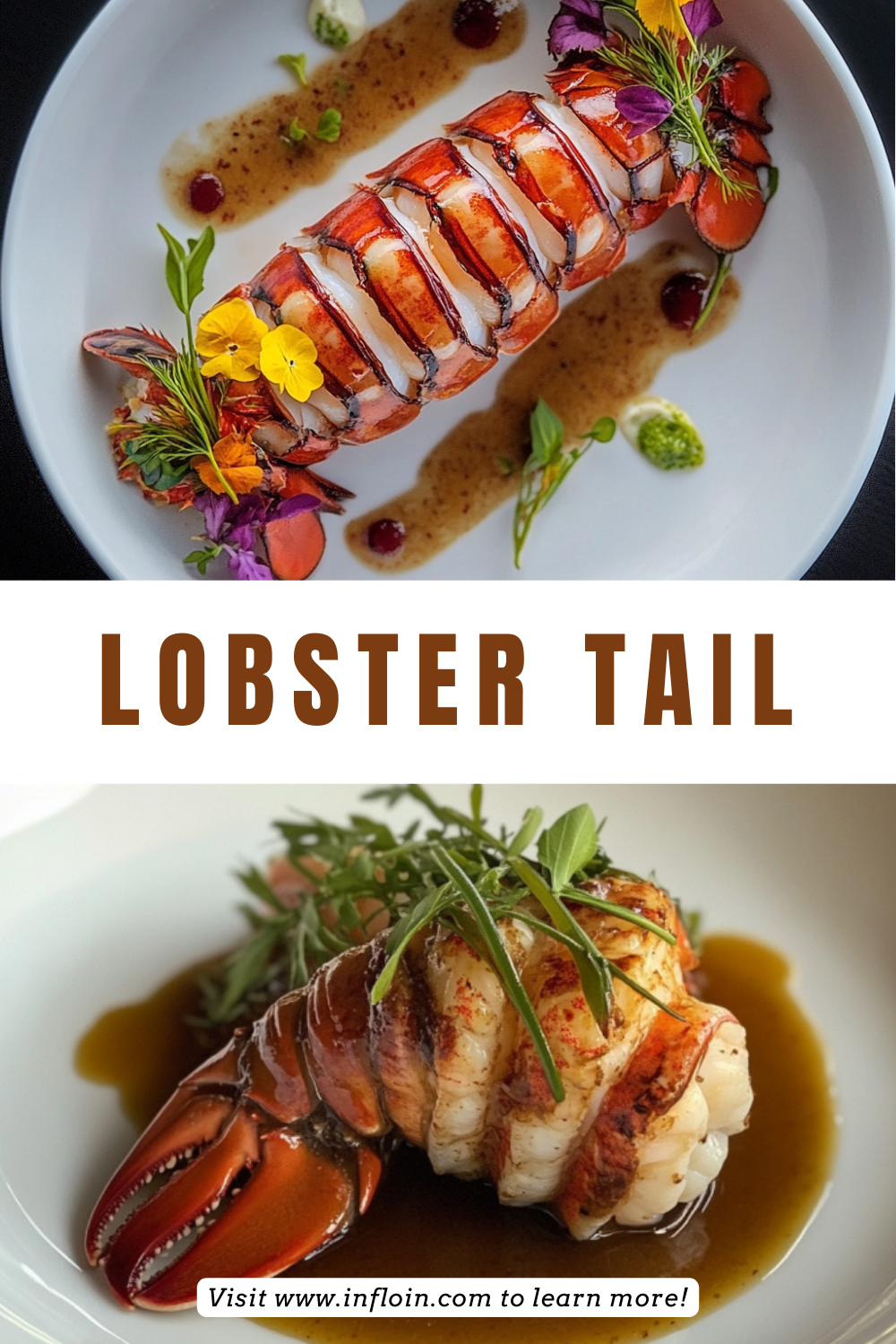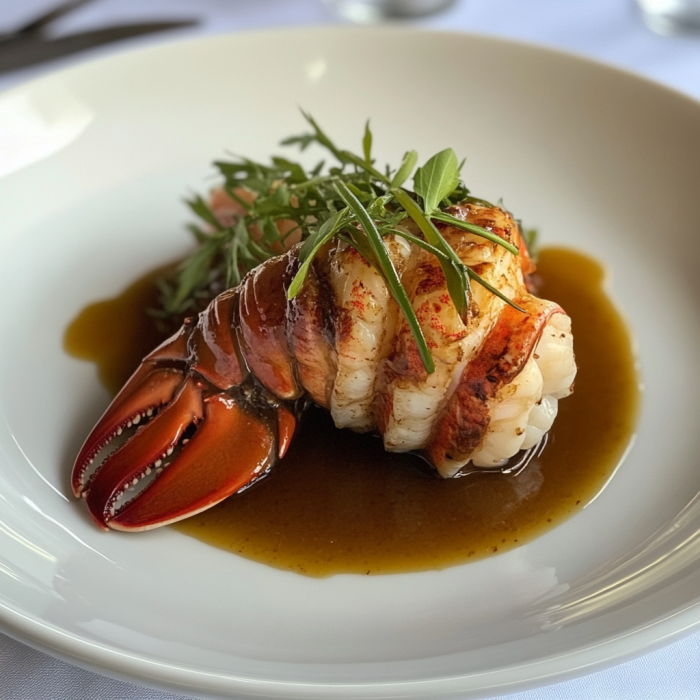Discover the ultimate lobster tail recipe with detailed instructions, tips, and variations to create a memorable seafood dish.
Introduction
Lobster tail is a luxurious seafood choice, perfect for special occasions or elevating a weeknight dinner. This comprehensive guide provides everything you need to prepare, cook, and serve lobster tails with confidence.
Understanding Lobster Tails
Lobster tails are the meaty portion of the lobster, prized for their sweet, tender flesh. They are versatile and can be prepared using various cooking methods, each bringing out unique flavors and textures.
Cooking Methods for Lobster Tails
Grilling Lobster Tails
Grilling imparts a smoky flavor to the lobster, enhancing its natural sweetness. To grill lobster tails, preheat your grill to medium-high heat. Cut the top shell lengthwise, brush the meat with melted butter, and season as desired. Place the tails meat-side down on the grill for 5-6 minutes, then flip and grill for an additional 4-5 minutes until the meat is opaque and firm.
Broiling Lobster Tails
Broiling is a convenient method that cooks lobster tails quickly under high heat. Preheat your broiler and place the prepared lobster tails on a broiler pan. Broil for 8-10 minutes, watching closely to prevent overcooking. The lobster is done when the meat turns opaque and slightly browned.
Baking Lobster Tails
Baking lobster tails results in a tender, evenly cooked dish. Preheat your oven to 425°F (220°C). Place the lobster tails on a baking sheet, brush with melted butter, and season as desired. Bake for 12-15 minutes, or until the meat is opaque and slightly browned.
Steaming Lobster Tails
Steaming preserves the lobster’s delicate flavor and moisture. Fill a large pot with a few inches of water and bring it to a boil. Place the lobster tails in a steamer basket over the boiling water, cover, and steam for 8-10 minutes until the meat is opaque and tender.
Poaching Lobster Tails
Poaching involves cooking lobster tails gently in a flavorful liquid, often butter-based. Heat the poaching liquid to around 180°F (82°C) and immerse the lobster tails, cooking for about 6 minutes until the meat is tender and opaque.
Cooking Time and Temperature
The general guideline for cooking lobster tails is to cook them for about one minute per ounce of meat. For example, a 6-ounce lobster tail would require approximately 6 minutes of cooking time. Always ensure the internal temperature reaches 140°F (60°C) to confirm doneness.
Why You’ll Love This Lobster Tail Recipe
-
Versatility: Suitable for various occasions, from casual dinners to formal celebrations.
-
Flavorful: The cooking methods enhance the natural sweetness of the lobster.
-
Impressive Presentation: Lobster tails make for an elegant and visually appealing dish.
-
Quick Preparation: Most methods require minimal time, making it easy to prepare.
-
Customizable: Adjust seasonings and accompaniments to suit personal tastes.
Ingredients Notes
-
Lobster Tails: Fresh or frozen tails can be used. Ensure they are thawed if previously frozen.
-
Butter: Use unsalted butter for better control over seasoning.
-
Seasonings: Common additions include garlic, lemon juice, paprika, and herbs like parsley.
-
Accompaniments: Serve with sides like roasted vegetables, rice, or a fresh salad.
How to Make Lobster Tails: Step-by-Step
-
Preparation: Thaw frozen lobster tails if necessary. Using kitchen shears, cut the top shell lengthwise down the center, exposing the meat.
-
Seasoning: Gently lift the meat from the shell, keeping it attached at the tail end. Season the meat with melted butter, garlic, lemon juice, and herbs.
-
Cooking: Choose your preferred cooking method—grilling, broiling, baking, steaming, or poaching—and cook the lobster tails as described in the respective sections.
-
Serving: Once cooked, serve the lobster tails immediately with additional melted butter and lemon wedges on the side.
Storage Options
If you have leftover lobster tails, store them in an airtight container in the refrigerator for up to 2 days. Reheat gently to avoid overcooking. For longer storage, lobster tails can be frozen for up to 3 months.
Variations and Substitutions
-
Spicy Lobster Tails: Add a dash of cayenne pepper or red pepper flakes to the seasoning mix for a spicy kick.
-
Citrus Twist: Incorporate orange zest into the butter mixture for a citrusy flavor.
-
Herb-Infused: Experiment with different herbs like thyme or rosemary for varied flavors.
-
Vegetarian Option: For a plant-based alternative, consider using king oyster mushrooms as a substitute for lobster tails.
Pairings and Accompaniments
-
Sides: Roasted baby potatoes, garlic mashed potatoes, or a fresh green salad.
-
Beverages: Sparkling water with a slice of lemon or a light, non-alcoholic beverage.
-
Sauces: Serve with a garlic butter sauce or a tangy lemon aioli.
Comparison with Similar Recipes
The lobster tail recipe stands out when compared to similar seafood dishes such as shrimp scampi, crab legs, or grilled scallops. Texture-wise, lobster is firmer and more buttery than shrimp, yet not as delicate as scallops. It provides a hearty bite, making it perfect for a centerpiece dish.
In contrast to crab, lobster meat is sweeter and less flaky, with a richness that holds up well to various cooking techniques. While shrimp and scallops often require lighter seasoning to avoid overpowering their subtle taste, lobster can handle bolder flavors like garlic butter, lemon zest, or spiced marinades.
Preparation-wise, lobster tails are slightly more involved due to the shell-cutting process but are simpler than breaking down a whole lobster or crab. They also have fewer small bones or shells to manage during dining.
Moreover, lobster tails are often perceived as more luxurious, making them an excellent choice for special occasions. Despite this, they’re just as easy to prepare as shrimp once thawed and trimmed properly.
Overall, lobster tail recipes deliver unmatched elegance and depth of flavor with a minimal learning curve, offering a satisfying upgrade over more common seafood dishes.

Frequently Asked Questions (FAQs)
Why is my lobster tail mushy after cooking?
Mushy lobster usually results from overcooking. Lobster meat is delicate and should be cooked just until opaque. Overcooking causes the proteins to break down, leading to a rubbery or mushy texture. Use a meat thermometer to check for doneness — it should read 140°F (60°C).
What is the best method of cooking lobster tails?
The best method depends on your taste and equipment. Broiling gives a crispy top and juicy center, while steaming retains moisture best. Grilling adds a smoky, charred flavor. For simplicity and even cooking, baking is highly recommended.
What is the best weight for a lobster?
For tails, 5 to 8 ounces per tail is ideal. This size provides enough meat for a satisfying portion without overcomplicating the cooking process. Larger tails (over 10 ounces) may require more precision to avoid uneven cooking.
How long can you keep a lobster tail in the refrigerator?
Cooked lobster tails last up to 2 days in the fridge when stored in an airtight container. Uncooked, fresh lobster tails should be used within 24 hours of purchase. If frozen, use within 3 months for optimal flavor and texture.
Best Time to Enjoy the Recipe
This lobster tail recipe is best suited for:
-
Dinner: Ideal for an elegant evening meal, especially paired with sides like rice pilaf or grilled asparagus.
-
Special Occasions: Perfect for anniversaries, holidays, or romantic dinners at home.
-
Lunch Brunches: For gourmet enthusiasts, it adds a luxurious twist to brunch menus.
-
Celebrations: Birthdays and graduations deserve a dish this delightful.
While it’s not traditionally served for breakfast or quick snacks, cold leftovers can be diced into salads or wraps for a light next-day meal.
Presentation Tips
The visual appeal of lobster tails adds to their culinary charm. Follow these tips for a restaurant-worthy presentation:
-
Shell-on Display: Keep the shell intact and perch the cooked meat over it for a striking “butterfly” effect.
-
Color Contrast: Plate with green vegetables, roasted potatoes, or colorful grains to highlight the bright red shell and white meat.
-
Drizzle Sauce: Add a drizzle of garlic butter or lemon herb glaze on the meat for shine and flavor.
-
Use Garnishes: Fresh parsley, lemon slices, or edible flowers add elegance and freshness.
-
Serve Hot: Use a warm plate to keep the meat at the perfect temperature when serving.
Serving in individual ramekins or placing tails on a long rectangular platter for a party setup also enhances presentation.
Conclusion
Crafting a memorable lobster tail recipe is simpler than it appears. With the right tools, techniques, and guidance, even beginners can deliver gourmet-quality meals at home. Whether baked, grilled, or steamed, lobster tails offer unbeatable flavor and class. They’re flexible enough for weekly family dinners yet special enough for holiday spreads.
Try various seasonings, explore pairings, and find your personal twist. Just be mindful of cooking time and doneness to preserve the lobster’s delicate nature.
From the initial preparation to the final garnish, this dish elevates the home dining experience in both taste and appearance.
For more interesting tips you can see here www.sotastyrecipe.com
And for recipes lovers you can check my friend’s blog here www.infloin.com


